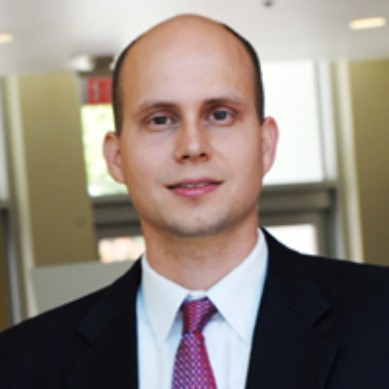
Title: “Neurohacking 427: Synthetic Biology Concentrated Channels, Cybersecurity & Biological Waveguides”
Plenary Speaker
Brandon Iglesias
Reactwell in the Americas, The Woodlands, Houston, TX USA
Abstract
Neurohacking is a term coined to describe the use of analog or digital spectrum interaction, through EM or biological, chemical or synthetic biology mass based vectors, with an organic, synthetic or hybrid organic and synthetic brain and central nervous system in a person or animal.
The enhancement or degradation of a biological, synthetic biology and hybrid bio/synbio life, is called neurohacking, and can involve use of Artificial Intelligence (AI) through Bio Cyber Physical System BCPS to effectuate unattributable modification of a person, on-average unknown to the person being enhanced or degraded by a given AI BCPS or AI CPS platform.
In 2013 Europe and America Europe, the United States, and China in 2016 publicly announced their BRAIN initiatives to fully understand, map and log the human brain. During the 2013 to current timeframe the advent of “neurowar” has further escalated with use of scalar waves to further add complexity to the cognitive warfare through time domain reversal, as synbio information transmitted through scalar wave data communications (e.g. cybernetic) travels at 1.5 x the speed of light. In 2022 the Reactwell team in the Americas came under neuroweapon attack, while performing for U.S. Department of Energy DOE and U.S. Department of Defense DOD.
In order to address the neuroweapon platform attack, weapon platform was reverse engineered and decomposed into organic, synthetic, cyber, transverse and scalar spectrum time based components in order to reverse engineer the adversarial AI enabled BCPS termed “NeuroStrike” by Robert McCreight at National Defense University (NDU) in America
Biography
Brandon Jose-Iglesias is an Electrochemical Engineer at Reactwell in United States of America, 2013 Kauffman Foundation Global Scholar and 2020 Edmund Hillary Fellow, New Zealand. Holds degrees in Chemical Engineering, MFIN, MBA and geochemistry Ph.D. (partial) studies at University of Nevada-Reno, prior to leaving Masters/Ph.D studies through DOE:EERE:NGA and focusing on Reactwell, a sustainable energy & chemical startup enabled through novel materials science and technology. Select scientific publications in journals focus on use of Carbon Nanospike CNS to facilitate otherwise inaccessible chemical reactions in collaboration with government and international industry. Areas of interest include new physics based energy and neurosecurity.

Title: Can Nanomedicine change Occupational Health??
Plenary Speaker
Prof. Maria Cecilia Colautti
National Defense University, Argentina
Abstract
Nanomedicine, the application of nanotechnology in medicine, has the potential to revolutionize the way we diagnose, treat, and prevent disease. While the use of nanomedicine is gaining momentum in clinical settings, its use in occupational health is relatively unexplored. The small size of nanoparticles used in nanomedicine allows them to bypass biological barriers, which could pose occupational health risks if inhaled or absorbed through the skin. However, with appropriate risk management strategies and monitoring, the potential benefits of nanomedicine in occupational health could be significant. Nanoparticles could be used for targeted drug delivery, imaging, and sensing, among other applications. In addition, nanomedicine could help address occupational health challenges, such as exposure to hazardous substances and the need for more precise and personalized medicine. This abstract highlights the potential for using nanomedicine in occupational health and underscores the need for further research and development in this field.
Biography
María Cecilia Colautti is Doctor of Medicine from the Inter-American Open University (UAI), Post¬graduate Studies in Pain Medicine from Favaloro University. Specialist in Occupational Medicine from the Medical College of the Province of Buenos Aires. Specialist in Forensic Medicine from the Argentine Catholic University (UCA). Master’s degree in Occupational Health and Safety. Preven¬tion of Occupational Risks. Polytechnic University of Catalonia. Full Professor in the Master’s Pro¬gram on Safety, Health, and Hygiene at the Faculty of Engineering of the Argentine Army. National Defense University. She has an extensive professional experience focused on integrated management systems in Safety, Health, Environment, and Quality processes. Certification in ISO 9001, ISO 45001, ISO 14001, ISO 18001, Occupational Safety and Health. ISO 14000 Environmental Management. . She is the author of the first book in Spanish language about Fundamentals of Nanotechnology and Nanotoxicity.
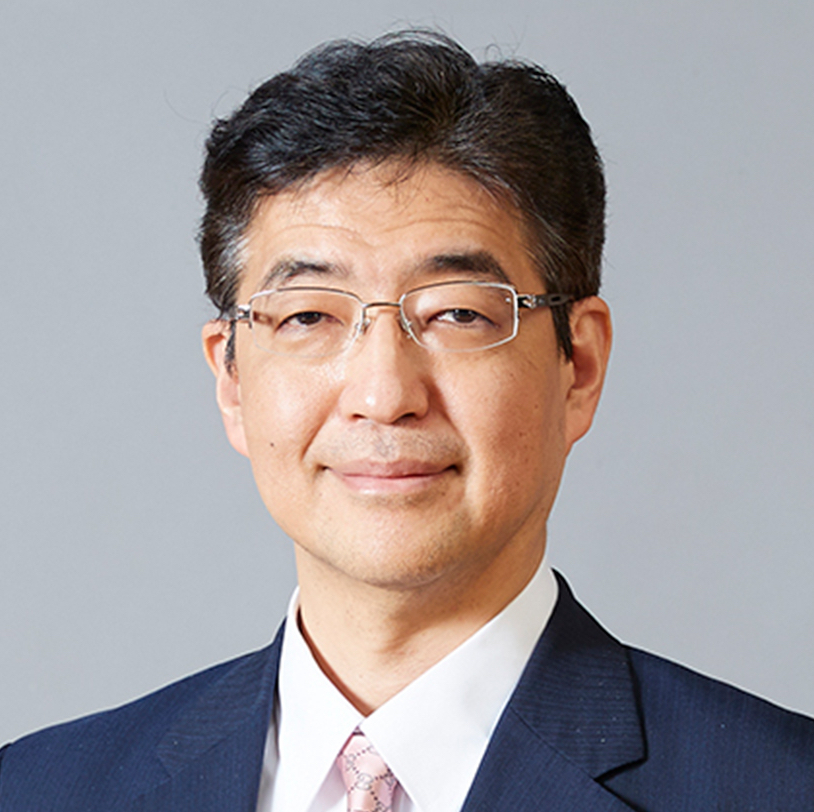
Title: Terahertz waves applied for 6G communications and Micro/Nano-particle Polymorph analysis
Plenary Speaker
Prof. Katsuhiro Ajito
International Professional University of Technology in Osaka, Japan
Abstract
Terahertz (THz) waves, with frequencies ranging from 10^11 to 10^13 Hz, have garnered significant attention due to their prospective utilization in 6G communications starting from 2030 [1–3]. The higher frequency of THz waves offers a superior wireless bit rate compared to other radio waves. Additionally, THz waves prove advantageous for imaging and spectroscopy, demonstrating promising results in pharmaceutical applications. THz waves can permeate tablets, allowing for the examination of coating homogeneity and identification of polymorphic forms in micro- and nanometer-sized particles [4-6]. Polymorphic forms in molecular crystals exhibit distinct crystal structures formed by various types of hydrogen bonds between molecules, resulting in diverse chemical properties such as solubility, melting point, and drug bioavailability. Bioavailability refers to the rate and extent of drug absorption. Determining polymorphic forms of crystals in micro- and nanoparticles using THz spectroscopy is more advantageous than X-ray diffraction for real-time monitoring of the pharmaceutical tablet production process. Furthermore, THz spectroscopy can be employed to analyze cluster structures in nanoparticles within ice. Due to its longer wavelength compared to infrared or visible light, THz waves can penetrate ice and are selectively absorbed by nanoparticles. We identified NaCl nanoparticles in ice as precursor substances of NaCl·2H2O during the freezing of NaCl solution using terahertz (THz) spectroscopy [7]. This discovery holds implications for the investigation of freeze-drying processes and suggests new possibilities for advancing technology in the production of nanoparticles, particularly ultrafine pharmaceutical powders that dissolve more readily in water.
Biography
Katsuhiro Ajito received his Ph.D. degree in applied chemistry from the University of Tokyo, Japan, in 1995. He was a Distinguished Technical Member of THz-wave applications at NTT Science and Core Technology Laboratory Group in Atsugi, Japan. He joined NTT Basic Research Laboratories in 1995, where he conducted studies on glutamate in single synapses in the brain using Raman spectroscopy and laser tweezers from 1995 to 2007. His current research interests include terahertz photonics in 6G for ultra-high-speed wireless communication and sensing/imaging capabilities.In 1999, he was awarded the Young Scientist Award for the Presentation of an Excellent Paper from the Japan Society of Applied Physics (JSAP). From 1995 to 2019, he served as the Executive Director and Chair of the Terahertz Spectroscopy Division of the Spectroscopical Society of Japan (SSJ). He was also the Secretary of the Terahertz Interest Group in the IEEE 802.15 Working Group for wireless personal area networks from 2011 to 2013 and the Chair of the Micro/Nano Electromechanical Systems and Bio/Medical Analyses Area of the International Conference on Solid State Devices and Materials in JSAP from 2012 to 2015. Since 2021, he has been working at the Department of Information Technology, Faculty of Technology, International Professional University of Technology in Osaka, serving as the Chair, and has been the Dean since 2022. He is a member of IEEE, JSAP, SSJ, and the American Chemical Society.
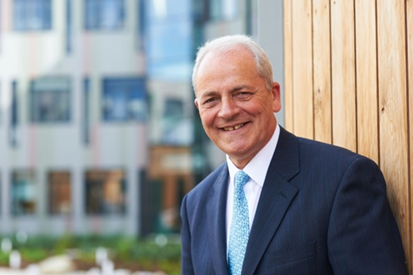
Title: Multicomponent High-Entropy Cantor Alloys
Plenary Speaker
Prof. Brian Cantor
Department of Materials, University of Oxford; and Brunel Centre for Advanced Solidification Technology (BCAST), Brunel University
Abstract
All human advances have depended on making new materials, and all materials are alloys, i.e. mixtures of several different starting materials or components. So the history of the human race has been the continued invention of new materials by discovering new alloys. Recently a new way of doing this, by manufacturing multicomponent high-entropy alloys, has shown that the total number of possible materials is enormous, even more than the number of atoms in the galaxy, so we have lots of wonderful new materials yet to find. And multicomponent phase space contains a surprisingly large number of single-phase extended solid solutions and compounds. The first group of these that was discovered are called Cantor alloys, an enormous composition range with a single-phase fcc structure, based loosely on the original equiatomic five-component Cantor alloy CrMnFeCoNi. This talk will discuss the previous history of alloying, the discovery of multicomponent alloys, the structure of multicomponent phase space, the fundamental thermodynamics of multicomponent solid solutions such as the Cantor alloys, the complexity of local atomic and nanoscale configurations in such materials, the effect of this on properties such as atomic diffusion, dislocation slip, and the resulting outstanding mechanical properties and potential applications, including at low and high temperatures, for corrosion and radiation resistance, and to enhance recycling and re-use.
Biography
Brian Cantor is an Emeritus Professor in the Department of Materials at the University of Oxford, a Research Professor in the Brunel Centre for Advanced Solidification Technology at Brunel University, a Trustee of the UK’s National Science Museum Group, Co-Director of the UKRI Interdisciplinary Research Centre for Circular Metals, and a Chief Editor of the Springer-Nature research journal High Entropy Alloys and Materials. He was previously Vice-Chancellor of the University of York and Bradford University, Head of Mathematical and Physical Sciences at the University of Oxford, and a research scientist and engineer at General Electric Research Labs in the USA; he also worked briefly at Banaras Hindu University, Washington State, Northeastern, IISc Bangalore and the Kobe Institute. He founded and built up the World Technology Universities Network, the UK National Science Learning Centre, the Hull-York Medical School, Oxford’s Begbroke Science Park, and the York Heslington East campus. He was a long-standing consultant for Alcan, NASA and Rolls-Royce, and editor of Progress in Materials Science. He invented the new field of multicomponent high-entropy alloys and discovered the so-called Cantor alloys. Among many honours and prizes from different countries around the world, he is a Commander of the British Empire (CBE) and a Fellow of the Royal Academy of Engineering (FREng).
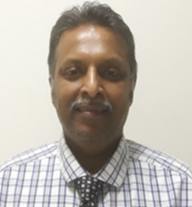
Title: Review of Advancement in Nanotechnology for use in Medical Applications and Expectations for the future
Plenary Speaker
Dr. Yuvaraja Visagathilagar
Principal Engineer at QinetiQ, Australia
Abstract
Over the last decade, new technological advancements have been achieved with its Research and Development (R&D) to manufacturing with enhanced stability, reliability, cost reduction, high yield, fast (and readiness) to global market and many other highly essential factors driven by the need for compact and affordability for the consumers with various medical applications. One of these technological break-through has come about from intensive and challenging learning and research processes with the use of Nanotechnologies for medical applications for treatments, early detection and sensing. Priority has been given to highly essential criteria of these technologies for reliability and stability for ethical use of everyday consumers for treatment of various diseases like diabetics, cardiovascular applications, cancer and many other medical conditions. One such example can be the Covid-19 in 2020 where there was a need for treatment and containment in the last 4 years with new medications and different forms of manufacturing processes with high requirement for fast to market. In this talk, extensive review of nanotechnologies for medical applications will be presented however there is still more development and cost-effective solutions are underway through trough research and development to fast turnaround to global market with further cost effectiveness to consumers and medical facilities. It is not just medicine (or medications) that is being undertaken by many research organisations (or centres and institutions) and pharmaceutical industries using different forms of nanotechnology processes but what future expectations is being considered by collaborative work of medical institutions and industries. Even in this webinar, there will be other speakers who will present their work with the use of nanotechnology for medical and other needed applications.
Biography
Dr Yuvaraja Visagathilagar, PhD (Australia), BEng(1st Class Hons., Australia), FIEAust, SMIEEE, CPEng, NER RPEV RPEQ, APEC Engineer, IntPE(Aus), IEA, PRINCE2, MOSA, SM-SESA, MINOSE, LM-MTT, MEDS, MSPIE, MAOS, MANZOS, MAIP, MBCS has over 28+ years of extensive expertise and experience in academia, research, and industry. He graduated with Bachelor of Engineering in Communication Engineering and Doctorate in Engineering (with a highly prestigious scholarship from the Australian Government) in 1996 and 2003 respectively from RMIT University, Melbourne Australia. His dissertation was in “Narrow-band Optical Modulator on Lithium Niobate” for telecommunication applications but it can be applied for other transceivers applications. In research and industry, he has contributed to over 40+ peer-reviewed international journals and conference pubications. He has visited and presented at universities in USA (i.e. UCLA and UCSD), Peregrine Semiconductor Corporation and in Japan (i.e. Science and technology Organisation).He has collaborated with Defence Science Technology Organisation (now DSTG) in Australia where he has contributed in the design, fabrication, packaging and testing of “High-Speed Lithium Niobate Optical Modulator” including documentation of processes for quality certification (ISO 9001) and flip-chip packaging of narrow-band optical modulators on Lithium Niobate and Ceramic materials. He has extensive academic teaching as a lecturer and post-doctorate research fellow in Photonics, FibreOptics & System, RF System, and Integration where he was involved in research of novel design of narrowband optical modulators. In early years, his research has been in Narrow-band Lithium Niobate Modulators but also in finding a solution for packaging of optoelectronic devices (i.e. ceramic and Silicon materials). During the collaboration, he worked with sub-contractors in system integration and packaging of the modulator devices in hermetically sealed packages for defence applications. In 2006, he joined “Future Fibre Technologies Ltd” who are the global leading organisation in optical sensing technologies and has extensive experience over 9 years in optical sensing. He was a senior manager and held positions as Senior Fibre Systems Engineer, R&D Team Leader and Applications Engineering Manager where he contributed in the company products enhancements and novel products design. He has contributed to 2 patent solutions for novel systems in optical fibre sensing and contributed to over 110+ reports with fellow colleagues and R&D teams (not published due to commercial-in-confidence). From July 2016 to March 2018, he was a Senior Academic at RMIT University for postgraduate and undergraduate courses in Electrical Engineering Analysis using Matlab, Electronic Engineering, Radar technologies, Communication systems, Optical/Photonic Engineering, Microwave Circuits & System and Advanced Mathematics for various program levels (or years). He contributed to the development teaching materials of a core course in Optical Fibre Systems and Networks for Bachelor and Master’s Program including supervising for over 10+ projects in undergraduate and postgraduate students with a minor thesis. Since April 2018 to June 2020, he is a Senior Academic with the Department of Electrical and Electronics Technology & Engineering, Applied Engineering College (AEC), Riyadh, Kingdom of Saudi Arabia which is affiliated with Lincoln College International and University of Hull, UK with accreditation of Colleges of Excellence by the Government of Kingdom of Saudi Arabia where he is undertaking teaching in Electrical and Electronics technologies & principles for various Bachelor level program. He has been a senior supervisor for over 30+ projects demonstrated and a minor thesis. In July 2020, he is a researcher undertaking photonics research into reservoir computing and senior academic in lecturing a topic in Optical Fibre Communication Systems, Digital Electronics projects using Altium to design & built a Digital Oscilloscope and Microwave/RF Systems with ©Cadence and Electronic Engineering at the University of Melbourne (Australia) and in January 2021, he joined RMIT University as a researcher and senior academic undertaking research in optical fibre systems and transmission with high-level multi-disciplinary engineering team. Since January 2022, he joined QinetiQ Australia as a Principal Engineer (Senior RF/EMI/EMC Systems Engineer) as a Design and Advisory role providing his expertise & experience in defence and government projects with key interest in Microwave/RF/Radar Communication Engineering, coherent detection optical sensing for pipelines, undersea exploration, seismic detection and temperature sensing, high-speed and narrow-band optical modulators. Recently in March 2023 was awarded with accreditation & certified with the Engineers Australia (EA) Chartered Professional Engineering (CPEng) and in the National Engineers Register (NER), APEC Engineer and IntPE(Aus). He has a distinguished professional engineering career, he is an active Senior Member of the IEEE for over 28+ years’ service where he is the Chair of the Victorian IEEE Electron Devices & Photonics Society Joint Chapter and representative in the Section Committee and Chair of History Commitee, Australia from 2017 and 2023 respectively He is a active member of IEEE where he is a key volunteer for the Senior Member Elevation reference in Victoria, Australia (or globally), Member of OSA, INCOSE, Senior Member of SESA, SPIE, AP-MTT, AIP, AOS, BCS and certified in PRINCE2® & system engineering. He is in various editorial boards for peer-reviewed international journals and key reviewer for many international scientific journals and conferences. He has presented at various international and local conferences as Plenary, Keynote, Invited and has been asked to provide a welcome talk at the conference. Other interests include and on-going, provides professional engineering consultancy to organisations locally and globally but passionate about teaching high school students from year 7 – VCE & other states in all Mathematic, Physics, System Engineering and Technology. Please see the https://www.linkedin.com/in/dr-yuvaraja-visagathilagar/ & technical profiles.
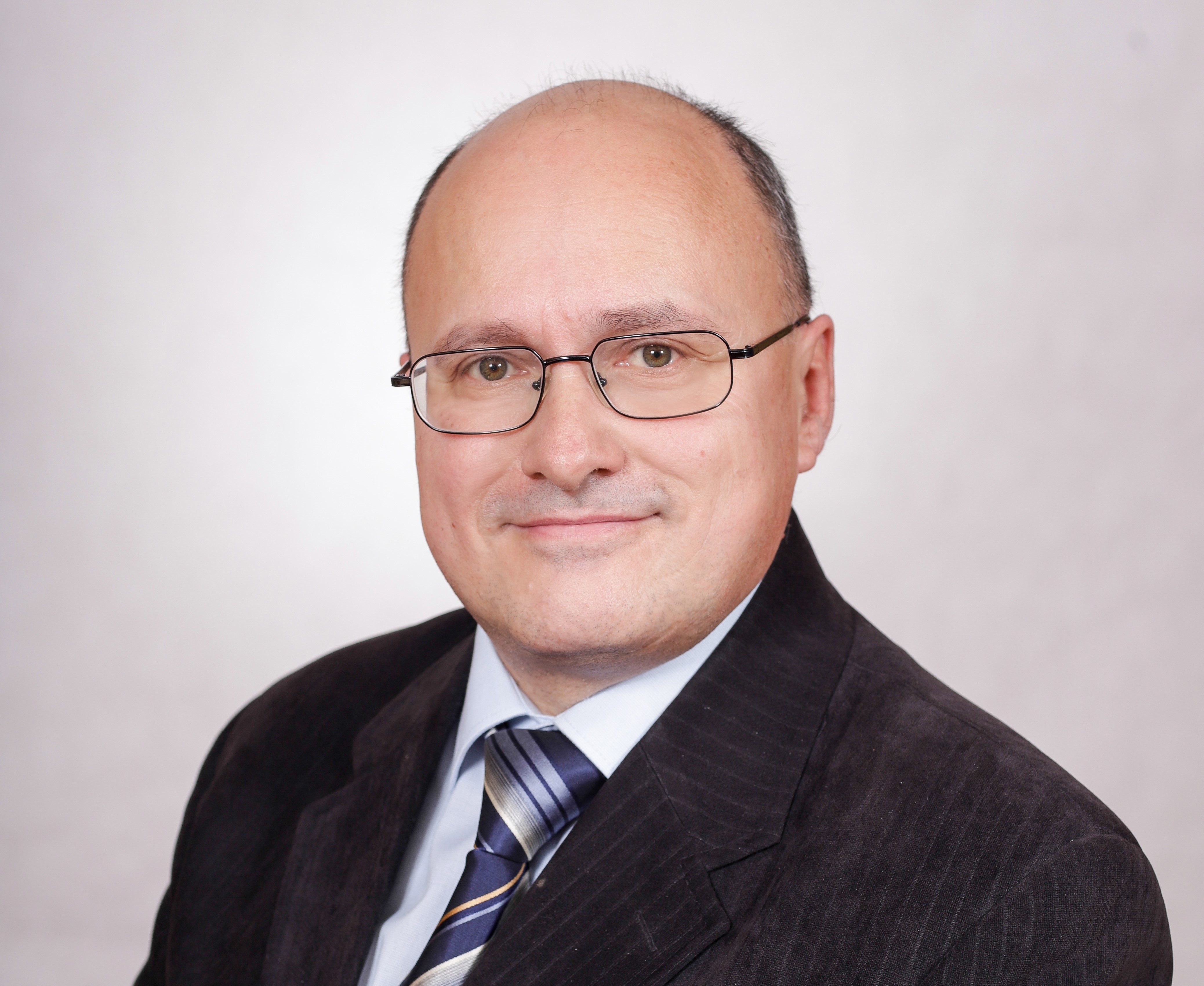
Title: Investigations of parquet surfaces finished with different lacquer systems in industrial conditions
Plenary Speaker
Dr. Tomasz Krystofiak
Poznan University of Life Sciences,
Poland
Abstract
The performance properties of varnish coatings of products intended for finishing floor elements are presented. The aim of the study was to determine the aesthetic and decorative features of the surface (appearance, gloss degree and colour) as a function of aging, taking into account varying temperature and humidity conditions. Interactions in the substrate-coating system were determined. The resistance of coatings to selected factors was presented.
Samples were made under technological conditions. It was found that the studied varnish coatings were characterised by high aesthetic and decorative features (colour, gloss). The varnish systems showed very high adhesion to oak wood, the highest being achieved by the brushed finish system. The matt coatings were the most scratch-resistant.
The tested coatings showed high abrasion resistance and such systems can be used in industrial conditions.
Biography
Tomasz Krystofiak in 1994 was finished study of Faculty of Wood Technology at Agriculture Academy in Poznan. In 2002 he prepared a PhD dissertation and in 2019 habilitation. Author or co-author of more than 320 scientific publications in the scope of gluing and finishing of wood and wood-based composites. To his research activities belongs surface phenomena, wettability, adhesion and adherence, modification, gluability and paintability of lignocellulosic materials. He was a Management Committee Member of COST Actions FP1006, CA15216, CA 21159 and Working Group Member (FP1303, FP1407). Since 2021 Guest Editor in Special Issues in Coatings, Energies, Forests and Materials Journals.
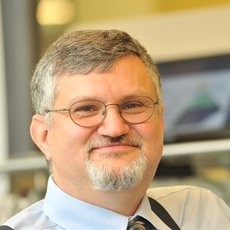
Title: The Rational Synthesis of Lanthanum Manganite Nanoparticles for Magnetic Refrigeration Applications
Plenary Speaker
Prof. Everett Carpenter
Virginia Commonwealth University, United States
Abstract
Gas expansion refrigeration systems account for over 30% of the total energy usage in commercial and residential buildings. They are a major drain on energy resources, source of greenhouse gas emissions, and use environmentally unfriendly chemicals. Magnetic refrigeration, which employees the magnetocaloric effect, has the potential to mitigate the energy drain and greenhouse gas emissions and is based on green available materials. Lanthanum manganite nanomaterials (LaxA1-xMnO3, where A = Ca2+, Sr2+, Na+, Ba2+, etc) exhibit promise as efficient, inexpensive solid refrigerants. The magnetic properties, namely Tc and ΔS, can be tuned by altering the ratio of Mn3+ to Mn4+ and the Mn-O-Mn bond distances and angles through the introduction of various metals at the a-site. We use a modified sol-gel synthesis which allows for control over the Tc and ΔS.
The Mn-O-Mn bond distances and angles were controlled through a-site cation size disorder resulting from a substitution of Sr2+ in place of Ca2+ in the La0.60Ca0.40-xSrxMnO3 crystal lattice. As Sr2+ was introduced the lattice parameters increased and crystallite size decreased. The lattice distortion created a 73% decrease in ΔS – from 5.6 J/kgK to 1.5 J/kgK.4 Any Tc affects were offset by the decreasing crystallite size. By contrast, introducing Na+ into the lattice in place of Ca2+ did not alter the lattice parameters of La0.60Ca0.4-xNaxMnO3 materials or the resultant crystallite sizes, but did increase the amount of Mn4+ and decrease the amount of Mn3+. The Tc values increased dramatically, however, from 265K to 333K, and ΔS saw a 33% decrease from 4.1 J/kgK to 2.8 J/kgK. This implies that Mn-O-Mn bond distances and angles are primarily responsible for ΔS, while Mn oxidation states are primarily responsible for Tc. Work done to optimize the synthesis parameters revealed that larger crystallites are ideal as well as the optimal synthesis parameters to achieve the largest crystallite sizes. These findings were successfully applied to La0.75Ca0.25MnO3 materials and the Tc value was increased from 200K, shown in the literature, to 280K
Biography
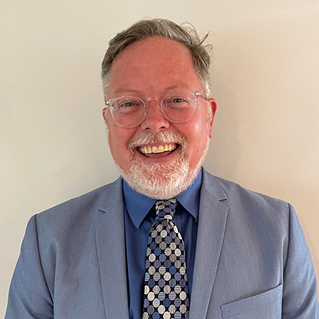
Title: A Real BandAIdTM: Incorporating Artificial Intelligence (RI) into Biomaterials, Nanotechnology, and Medicine
Plenary Speaker
Prof. Thomas J. Webster
School of Health Sciences and Biomedical Engineering, Hebei University of Technology, Tianjin, China and Interstellar Therapeutics, Mansfield, MA USA
Abstract
Artificial intelligence (AI) has already revolutionized numerous industries, yet, its use in nanotechnology and biomaterials is almost non-existent. This invited presentation will provide a summary of how AI can be used to design better biomaterials for various biomedical applications. In particular, AI is being used in implantable nano sensor design to prevent, diagnose, and treat various diseases from cancer to infection. AI has been used to predict what types of drug delivery vehicles will be most effective for that particular patient based on prior patient health data and real time response to therapies. It is well known that due to variants in immune systems from patient to patient, patients will respond differently to the same biomaterial and drug treatment, thus, personalized or tailored treatments are necessary and can result from AI. In vitro, in vivo, and human clinical studies will be presented in which AI has already improved medicine. In this manner, this abstract presents a positive view on the implementation of AI into medicine showing how it can be used to improve disease prevention, diagnosis, and treatment.
Biography
Thomas J. Webster’s (H index: 122; Google Scholar) degrees are in chemical engineering from the University of Pittsburgh (B.S., 1995; USA) and in biomedical engineering from RPI (Ph.D., 2000; USA). He has served as a professor at Purdue (2000-2005), Brown (2005-2012), and Northeastern (2012-2021; serving as Chemical Engineering Department Chair from 2012 - 2019) Universities and has formed over a dozen companies who have numerous FDA approved medical products currently improving human health in over 20,000 patients. His technology is also being used in commercial products to improve sustainability and renewable energy. He is currently helping those companies and serves as a professor at Brown University, Saveetha University, Vellore Institute of Technology, UFPI, and others. Dr. Webster has numerous awards including: 2020, World Top 2% Scientist by Citations (PLOS); 2020, SCOPUS Highly Cited Research (Top 1% Materials Science and Mixed Fields); 2021, Clarivate Top 0.1% Most Influential Researchers (Pharmacology and Toxicology); 2022, Best Materials Science Scientist by Citations (Research.com); and is a fellow of over 8 societies. Prof. Webster is a former President of the U.S. Society For Biomaterials and has over 1,350 publications to his credit with over 55,000 citations. He was recently nominated for the Nobel Prize in Chemistry.

Title: Receptor-Polymer Fusion Therapeutics: a unique class of re-engineered nanomaterials for small molecule drug delivery
Plenary Speaker
Dr. Jugal Dhandhukia
University of Southern California, currently employed by AbbVie, USA
Abstract
Systemic delivery of potent and hydrophobic drugs remains challenging due to the solubility and toxicity profile associated with such molecules. One such potent small molecule, Rapamycin, an immunosuppressive and a cytostatic agent, suffers from low solubility, poor bioavailability, and dose-limiting side effects such as pulmonary- and nephro-toxicity limiting its clinical potential. Such poor drug-like properties necessitate use of aqueous vehicles or carriers to make amenable parenteral delivery of such molecules. Elastin-Like Polypeptides (ELPs), a unique class of recombinant protein polymer nanomaterials, serve as attractive scaffolds for small molecule drug delivery because they can be charge-neutral, water soluble, high molecular weight, monodisperse, biodegradable, and decorated with functional proteins. This work investigates fusion of the FK-506 binding protein 12 (FKBP), which is the natural binding receptor of Rapamycin, to different architecture based ELP polymers for Rapamycin delivery via subcutaneous administration. Three different architectures for FKBP-ELP fusions (FSI, FA, and FAF) were compared for drug loading, binding thermodynamics, stability, in vitro, in vivo efficacy, and bio-distribution in an orthotopic model of breast cancer. The soluble two-headed ‘Berunda’ polypeptide (FAF) demonstrated significant advantages such as increased drug loading, favorable drug binding interactions, enhanced formulation shelf-stability, in vivo tumor accumulation, and growth suppression. This strategy of fusing the FKBP receptor to protein-polymers, such as an ELP, effectively opens up a range of interesting delivery options for rapalogues and other potent drugs.
Biography
Dr. Dhandhukia has 10+ years’ academic and industry experience in drug development of biologics, protein biophysical & analytical characterization, pre-formulation, and drug delivery. He holds a Doctor of Philosophy (Ph.D.) and a Master of Science (M.S.) degree in Pharmaceutical Sciences from the University of Southern California, School of Pharmacy, Los Angeles, United States. He has a strong publication record in the field of recombinant nanomaterials published in reputed high impact factor journals such as Theranostics, Journal of Controlled Release, and ACS Bioconjugate Chemistry. He is currently employed at AbbVie, United States, one of the leading biopharmaceutical companies across the globe. His current role as a Senior Scientist includes supporting research & development as well as late-stage clinical development of a niche class of highly potent large molecules called ‘Neurotoxins’ having both aesthetic and therapeutic applications.
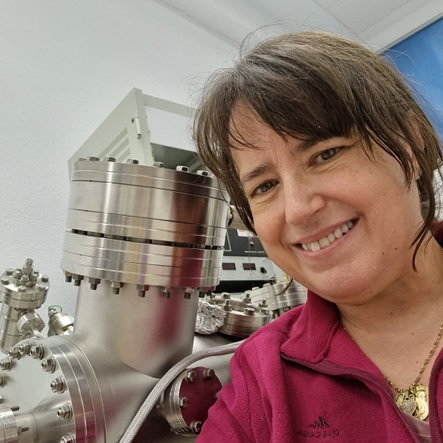
Title: Impact of the nanoscale structure and surface morphology on the properties of polymer nanocomposite films for biomedical applications
Keynote Speaker
Prof. M. Teresa Cuberes
Department of Applied Mechanics and Project Engineering, Mining and Industrial Engineering School of Almadén, University of Castilla-La Mancha, Spain
Abstract
We have applied Scanning Probe Microscopy (SPM) techniques complemented by additional relevant structural and physico-chemical techniques such as X-ray Diffraction, Fourrier Transformed-Infrared Spectroscopy, Differential Thermal Analysis and Thermogravimetry, to gain insight into the nanostructural organization and surface morphology of thin nanocomposite polymer films. On Polyvinyl Alcohol (PVA) – graphene quantum dots (GQD) nanocomposite films [1] , the photoluminescence (PL) spectra of the films were found to depend on both the amount of GQDs incorporated and on the film morphology. The PL spectra revealed bands at 430 and 495 nm. Increasing the GQD load above 1,2 wt% GQD led to an increase of the lower energy band, as characteristic surface pores with increased stiffness and frictional contrast were apparent in the SPM images. For a load of ~2%wt GQDs, the surface morphology was characterized by extended cluster aggregates with lower stiffness and friction than the surrounding matrix, and the PL signal decreased. On PVA – SrTiO3 nanocomposite films [2, 3], the SrTiO3 nanoparticles formed small nanoclusters from 3 to 5 individuals, which for high concentrations gathered in microaggregates. Apparently, the PVA/ SrTiO3 interface interaction is quite weak. Addition of nanoparticles to PVA lead to a decrease of surface free energy, an increase of roughness and an improvement of the mechanical strength. The films were shown to present good biocompatibility and high antibacterial and biodegradation properties.
Biography
Teresa Cuberes is currently full Professor in Materials Science and Engineering at the Mining and Industrial Engineering School of Almadén in the University of Castilla-La Mancha, Spain, and leads the UCLM research group of Nanotechnology and Materials (https://blog.uclm.es/gruponanomat/category/blognanomat/). She is an expert in Scanning Probe Microscopy, with pioneering contributions in the field of molecular manipulation with Scanning Tunneling Microscopy in UHV, the study of the electronic properties of buried interfaces using Ballistic Electron Emission Microscopy, and the characterization of nanoscale elastic, viscoelastic and adhesive properties using ultrasonic-Atomic Force Microscopy. Currently, she is interested in the preparation and characterization of polymer nanocomposites for applications such as drug delivery and energy harvesters.
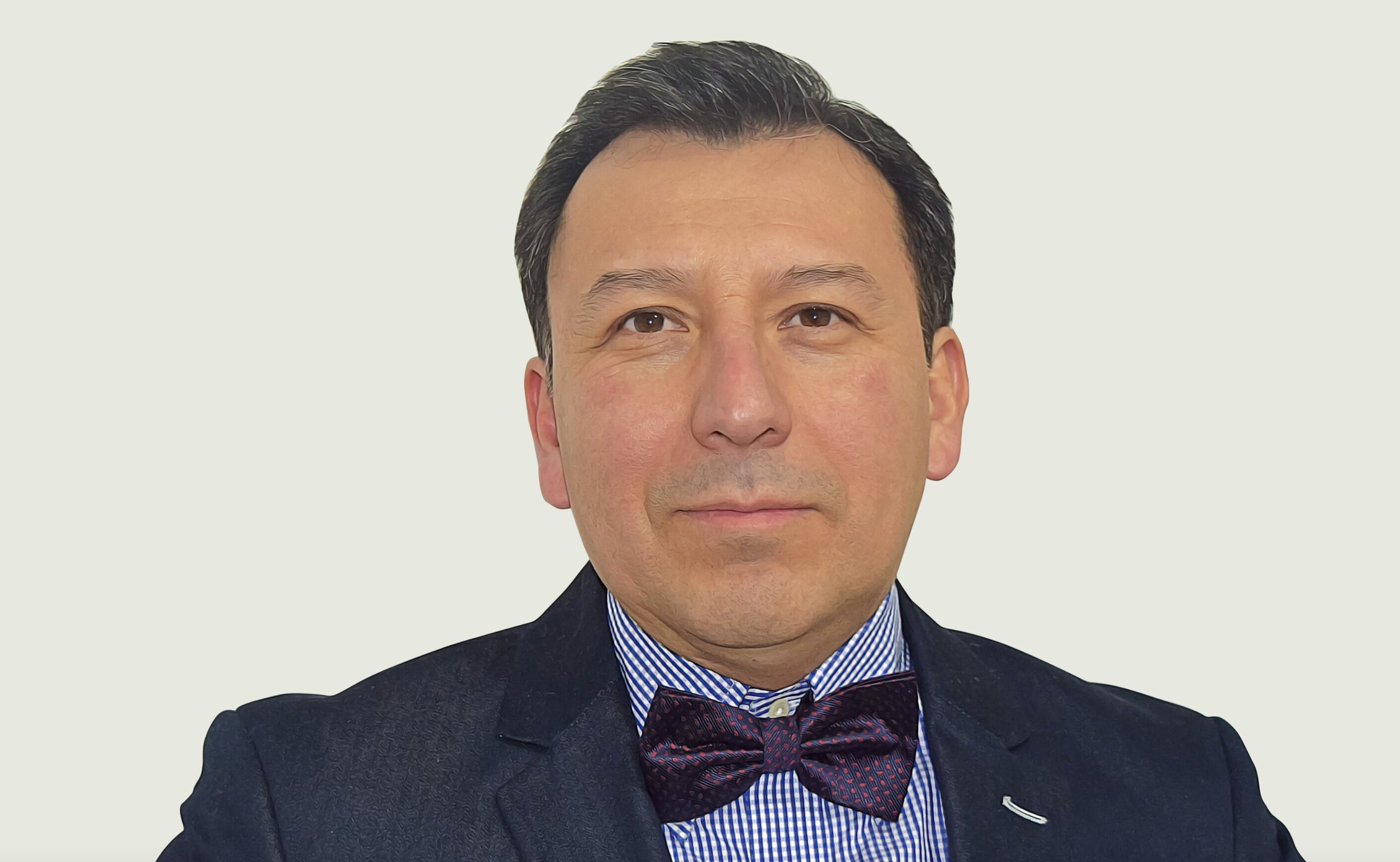
Title: “Current status and challenges of the Pneumoconiosis Observatory of the Americas”
Plenary Speaker
Prof. Diemen Delgado-García
Observatory of Pneumoconiosis in the Americas, Santiago, Chile
Abstract
Pneumoconiosis is a term coined to describe the non-neoplastic pulmonary response to the inhalation of mineral dust, primarily resulting from occupational exposures.
Pneumoconioses still remain a common issue in occupational safety and health due to the lack of official information on the number of workers exposed to pneumocongenic agents and former workers who were exposed to these agents. This lack of data can hinder the assessment of the magnitude of the problem, the implementation of preventive measures, the provision of adequate medical care, and compensation for affected individuals.
Europe, the United States, and China are the leading countries in silicosis research, with significant influence from the United States and Europe. Spain shows a growing prevalence of silicosis cases in individuals under the age of fifty since 2005. In both developed and developing countries, there are significant environmental liabilities related to asbestos, resulting from large civil works and major constructions. Pleural thickening is a significant consequence of exposure to all types of asbestos fibers and has increased in frequency in recent years compared to parenchymal asbestosis.
To address this issue, the "Observatory of Pneumoconioses of the Americas" aims to undertake research efforts and data collection to obtain information on the prevalence and incidence of pneumoconiosis cases in the Americas. It will also gather initiatives to strengthen awareness among workers and employers about the risks of exposure to pneumo congenic agents, advocating for improvements in safety and health regulations and practices at the workplace
Biography
Diemen Delgado-García is an Occupational Health Physician at the Professional Disease Qualification Committee of the Chilean Safety Association (ACHS). He holds a specialization in Public Health from the University of Chile and is an Occupational Pulmonologist from the Catholic University of San Antonio de Murcia. He completed his Doctorate in Occupational Health Sciences at the University of Guadalajara. Additionally, he is a Member of the International SOFIA Project at Imperial College London and serves as the Director of the Neumoconiosis Observatory of the Americas. His areas of interest include research on occupational respiratory diseases. He is the author of numerous scientific publications in books and journals.

Title: Keynote Speaker
Nano-technology in Ayurveda
Dr. Shivani Sanjeev Gavande
Parul Institute of Ayurved and Research, Vadodara, India
Abstract
Ayurvedic texts, such as Ras-Shastra and Bhaishajya Kalpana, describe the preparation of pharmaceuticals involving the use of extremely small particles, including metallic and non-metallic compounds, as well as herbo-mineral formulations. Bhasma, for instance, refers to the preparation of metallic drugs through a process that involves herbal juices, and these preparations have been used effectively in the treatment of various chronic ailments. Similarly, formulations like Kupipakwa Rasayana, Ayaskriti, and Sookshmoushadhee also reflect the application of Nano medicine in Ayurveda, where the ingredients are processed into extremely fine particles for therapeutic purposes. Bhasmikarana involves the processing of metals with herbs to create organo-metallic or organo-mineral complexes. These complexes have improved stability and functionality, aiding in assimilation and targeted drug delivery in the human body. Additionally, the process aims to reduce particle size, converting metals into Bhasma nanoparticles. These nanoparticles are touted to be biocompatible, bio-assimilable, absorbable, and suitable for human use.
Historical evidences claim Ayurveda as pioneer in the pharmaceutical processing and safer therapeutic use of metals.
The historical application of nanotechnology in Ayurveda underscores the relevance of traditional knowledge systems in modern scientific advancements. It also highlights the long-standing understanding of the benefits and mechanisms of using nanoparticles for medicinal purposes. Moreover, the traditional use of nanotechnology in Ayurveda provides insights and inspiration for contemporary research and development in the field of Nano medicine. By studying these ancient practices, scientists can gain valuable knowledge to further enhance the effectiveness and safety of modern Nano-based drug delivery systems and therapeutic approaches
Biography
Dr.Shivani Sanjeev Gavande is Ph.D. in Ayurveda, Masters in Kayachikitsa-Ayurveda and a Bachelor of Ayurvedic Medicine and Surgery. She has received Hari Ananta Gold Medal for her research work under Ayurvidya, New Delhi. She is the Professor of Kayachikitsa at Parul Institute of Ayurved and Research, Vadodara, Gujarat, India and had been faculty and examiner of Maharashtra University of Health Sciences, Nasik, Maharashtra, India. She is having 23 years of clinical and academic experience. Dr.Shivani Sanjeev Gavande has been resource person in various Ayurveda workshops and seminars. Also she has shared her valuable clinical experiences and Ayurvedic concepts in various national and international conferences. She has published her research articles in peer reviewed national and international journals. She was invested Ph.D. for her work in Enhancement of quality of life in patients having cancers of female genital organs. She has been worked for teenagers since last 23years and socially active for women empowerment and environmental awareness. She is healer and councilor of mindfulness program, satwavajaya chikitsa also volunteer of Aniruddha Academy of Disaster management.

Title: Revitalizing nanomaterials and natural products against parasitic diseases
Plenary Speaker
Prof. Maria de Lourdes Pereira
CICECO - Aveiro Institute of Materials and Department of Biology, University of Aveiro, Portugal
Abstract
In recent years, parasitic diseases have been global threats, prompting extensive research into diagnostic and therapeutic strategies. This communication focuses on the role of nanotechnology in encapsulating herbal extracts, with emphasis on combating malaria, Acanthamoeba keratitis, and leishmaniasis. Engineered nanoparticles, niosomes, and liposomes, characterized by diverse sizes, shapes, and properties, are explored as effective carriers for delivering bioactive compounds. Notably, we investigate the potential of Zingiber officinale (ginger) and Curcuma longa (turmeric) extracts.
Ginger, known for its bioactive compound gingerol, has demonstrated anti-inflammatory and antioxidant properties. Turmeric, rich in curcumin, exhibits potent anti-parasitic, anti-inflammatory, and immunomodulatory effects.
In line with the reported synergistic effects of combining nanomaterial-based delivery systems with conventional therapies to maximize treatment outcomes, we intend to develop an integrative approach that enhances therapeutic efficacy and mitigates adverse effects associated, thereby promoting patient well-being.
To understand the biological mechanisms underlying the heightened effectiveness of nanomaterials and encapsulated natural substances, we investigate the interactions of these nanomaterials with phytopharmaceuticals, parasite-infected cells and the host immune system. This comprehensive approach, allows for the design and development of targeted and efficient delivery systems, optimizing treatment strategies. Considering the long-term impact, sustainability, and scalability of this strategy, a comprehensive biocompatibility and safety assessment is paramount. This includes an in-depth analysis of potential cytotoxicity, immunogenicity, and long-term effects on human health. Our commitment extends to potential future sustainable manufacturing processes, judicious resource utilization, and eco-friendly disposal methods, aligning with the United Nations' Agenda 2030 Sustainable Development Goals, specifically Good Health and Well-being (SDG 3) and Responsible Consumption and Production (SDG 12).
Biography
M.L.Pereira, Associate Professor with Habilitation at Department of Medical Sciences and member of CICECO-Aveiro Institute of Materials, University of Aveiro, Portugal, has experience in Cytology and Histology. Research has been focused on in vitro interactions of male reproductive cells with metal compounds, nanoparticles, and drugs. She collaborates with the Southeast Asia Water-based research and World Union for Herbal Drug Discovery on the potencial of medicinal plants against infectious diseases. She co-authored several book chapters and papers in international journals and has been OCM of several International Conferences. She received the 2022 Matthew A. Eichler Memorial Fellowship Awardee (Excellence in Research).
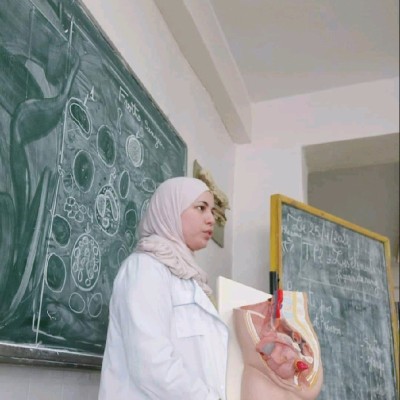
Title: Green Nanotechnology: Pioneering Sustainable Solutions for Future Environmental and Health Challenges
Keynote Speaker
Dr. Feriel REMITA
Environmental Research Center, Annaba Algeria
Abstract
In this keynote address, we will explore the paramount significance of "Green Nanotechnology: Pioneering Sustainable Solutions for Future Environmental Challenges" within the dynamic landscape of environmental research. The presentation will spotlight the pivotal role of green nanotechnology in addressing both environmental and health-related concerns. By harnessing the power of nanoscale innovations, we unlock transformative possibilities for mitigating environmental impact while simultaneously promoting public health.
The Environmental Research Center serves as a hub for groundbreaking initiatives that leverage green nanotechnology to tackle complex challenges. From pollution remediation to targeted drug delivery systems, the applications are diverse and impactful. This talk will delve into specific projects and advancements within the Center, illustrating how nanotechnology can offer sustainable solutions that harmonize with ecological balance.
Moreover, we will discuss the interdisciplinary nature of green nanotechnology, emphasizing collaborative efforts between researchers, engineers, and healthcare professionals. This integration fosters a holistic approach that considers environmental sustainability and human well-being in tandem.
As we navigate through this exploration, the audience will gain insights into the promise and potential challenges associated with green nanotechnology. By understanding the intricate balance between technological progress and environmental responsibility, we can chart a course towards a future where nanotechnology serves as a catalyst for positive change. Join us in this engaging discussion as we unravel the layers of significance surrounding green nanotechnology in shaping a healthier and more sustainable world.
Biography
Dr. Feriel REMITA, holding a Ph.D. in animal ecophysiology from the University of Badji Mokhtar Annaba, and as a researcher at the Environmental Research Center (CRE) in Annaba, my career has been defined by an unwavering passion for environmental preservation. Currently, my work at CRE is centered around an innovative project that explores the application of green nanoparticles as a depollution agent while assessing their impact on cellular health. This pioneering initiative aims to develop sustainable solutions to mitigate pollution issues while safeguarding ecosystem health. My dedication to environmental research and conservation continues to drive me to be a catalyst for a cleaner and healthier future.

Title: The Dire Consequences of Nano Tech Development and Transhumanism Morphology
Speaker
Bryan Pelletier
Bryan396 Nano Tech Research Project, Canada
Abstract
My presentation will provide multiple examples of the nanotechnology self assembling polymers, nanotechnology programmable magnetic carbon and nano tech components that have saturated the human body, making it a biotech frequency transceiver and computer network. This is creating an alteration of our DNA and genetics, the result of MRNA genetic transfers and DNA attachments.
All life on the planet is at a critical stage of nano tech saturation, permanent genetic mutating and biological alterations.
In 2012, during research, I encountered a controversial condition termed Morgellons, that appeared to be the same as those that the nano tech developers were displaying in their lab reports.
In comparing the images of the Morgellons with the Nano Tech researchers published achievements, I saw them as being similar and when observing them under microscope, concluded that these were bio nano tech assemblies and components.
My investigations found these to be consistent with the samples taken from the research papers on nano tech, the morgellons sample pictures and the ones i have found in the human body, and documented.of pictures and explanatory videos.
The removal of these nano nodes has reversed many lifelong health issues, some had repeated medical interventions, thus improving health and vitality.
There is an expected response, of auto rejection, at these findings, and these will disperse as the findings are reviewed and analyzed.
Any hesitation of accepting the information as factual and accurate, will dissipate as the extensive documentation is reviewed.
My 12 years of focused research has logged 10's of thousands of research hours, along with deep reflective analytical contemplation and personal observations, to arrive at these findings and conclusions.
What I have found,and offer evidence of, is substantiating and indisputable proof of the claims I am making about the genetic disruptions, along with an explanation and understanding of what processes are involved.
My discoveries have traced the nano tech loading, of life long loading, back to childhood medical issues, as they reappeared and were removed.
The lifelong accumulation of the nano materials, which is responsible for many health, if not all health issues, we are now experiencing from the nano tech loads, that have manifested as unusual new outbreaks of diseases. .
My claims are easily verifiable by anyone who takes the time to inspect their own bodies with an inexpensive USB microscope, available on the internet for $30.
One can easily identify the red and blue colored threads that are embedded in the polymer hydrogel layers that coat the body and shrink with a high volume of water evaporation, from the hydrogels on the tissue surfaces, at a magnification of 200x.
There are ample documents that they have published claiming to use the nano tech in geo engineering, in agriculture and meat production.
I will be assembling a detailed overview of each stage of the nano build processes, as soon as possible, and prior to the conference for reference and to provide a foundation to work from
Biography
Xerox Computer Tech last half of the 1980's Home Contractor and Caretaker for the money privileged in the early to mid 90's Mid 90's til 2004 Motivated by a Mid life health crisis, started my deep spiritual studies of the Metaphysical Realms, Miracles Manifested, Quantum Physics, Medical Investigations and many obscured teachings and understandings from ancient and obscure texts that have faded from public knowledge and hidden overtime. 2004 til 2012 I Started a Far Infrared Massage Bed, and subtle body energy systems, Health Clinic, with a Chinese partner who was well versed in acupuncture and Chinese healing techniques. I continued Spiritual Studies with Body and Mine Energy and Control System, related to frequencies and alternate healing modalities detached from main stream alopathic protocols and belief systems. 2010 Published Zero Point Energy Document on Frequencies and Manifestation, 2011 Discovered the bio nano load in the body and saw it as Self Assembling Polymers. Produced the initial Nano Tech Document. ' Chemtrails Morgellons', Self Assembling Polymers and Nano Technology.' 2011 til 2020 Nano Tech Research and Experiment. 2020 Formulation of the Ionic Formulas and Compounds 2020-2023 Continued formulation and testing of effective nano tech neutralization and detoxification. Currently: Ongoing testing of the formulas and tweaking the process and continuing research, now dedicated to nano tech research and public awareness for the last 12 yrs.@ 12 - 18 hrs daily, with over 100,000 Hrs. of research time invested.
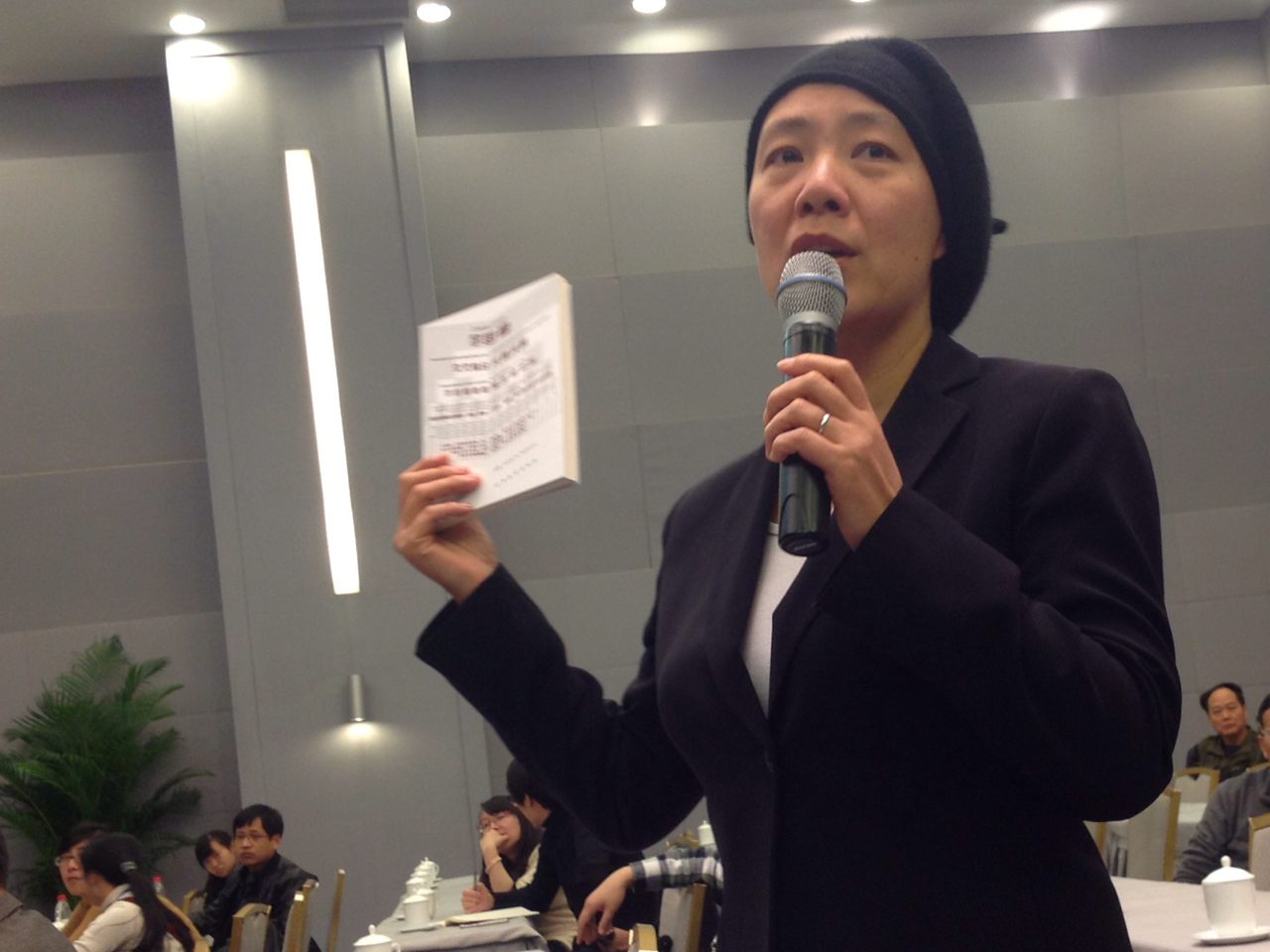
Title: Differentiating “Commonality Particles” from “Personality Particles"
Speaker
Yansha Yu-Sandstrom
Independent scholar, USA
Abstract
This article is based on the "Principium of Commonality and Laws of Personality Interlinked Consensus", which builds "The Three Great Natural Complementary Principles" within "The Same Completely Inclusive Faith with Its Principium of Natural Laws of Compounding-Corresponding-Trinity Presents and Unfolds Through Different Ways and Methods in Science, Philosophy, Religion, etc." (Abbreviation: Principium, published under a different name in the second issue of Frontier Science in 2014); and the absence of any one of them results in an incomplete description of any individual, entity, or situation. It aims to guide nanotechnology towards a safe, stable and healthy development path by helping modern society comprehensively understand and master this Principium.
Biography
Ms. Yansha Yu-Sandstrom is an independent scholar who served as a visiting scholar at the University of Washington. Her research aims to provide complete theoretical principles for cross-integration, interdisciplinarity and cosmology.
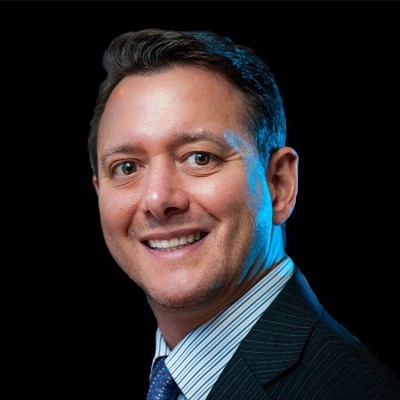
Title: "Graphene Revolution in Construction: Enhancing Concrete Properties and Durability”
Speaker
Eduardo Priego Mondragón
CEO Energeia Graphenemex, Mexico
Abstract
Graphene, a 2D carbon material, has transformative potential in concrete applications. Its inclusion in construction materials, brings substantial improvements.
Graphene oxide, a key component, acts as a nanoreservoir of water, aiding hydration and reducing water/cement ratio. This results in a product that is less porous, mechanically stronger, and more durable. Additionally, it significantly improves impermeability, reducing water permeability by up to 3.5 times and chloride ion permeability by 10-12%. Its interaction with C-S-H crystals enhances electrical resistivity in the concrete, making it less susceptible to corrosion and contributing to a longer service life.
Furthermore, the inclusion of graphene oxide catalyzes the cement hydration reaction, accelerating the setting process. This is particularly beneficial for prefabricated structures, reducing demolding time and increasing project efficiency. The material's heat dispersion properties lead to improved temperature stability, reducing energy consumption and costs related to air conditioning.
In essence, Graphene Oxide not only makes concrete more resilient but also addresses sustainability concerns by reducing the need for clinker, a major source of CO2 emissions in cement production. This innovative technology signifies a significant step towards creating more durable, efficient, and environmentally friendly concrete structures.
Biography
Eduardo Priego Mondragón is an experienced financial professional with a robust academic background, holding an MBA in International Banking and Finance from the University of Birmingham. Over 25 years in the financial sector, serving as CEO and Commercial Director in banks and microfinance institutions. Currently CEO at Graphenemex, a Graphene and Applications developer company, that it is expanding its global presence and fostering collaborations to enhance products with tailored graphene materials
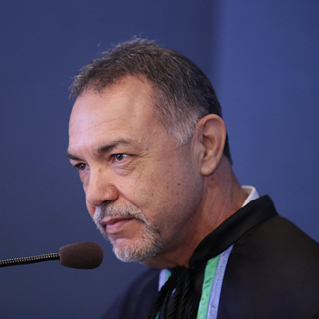
Title: Amplification of cell viability response: The synergism of radiofrequency and nanocomposites
Plenary Speaker
Prof. P.C. De Morais
Catholic University of Brasília, Brazil
Abstract
In this plenary talk, it will be explored the use of the Hill model to assess the Benchmark dose (BMD), the lethal dose 50 (LD50), the cooperativity (E) and the dissociation constant (K) while analyzing cell viability data using nanomaterials. The presentation is addressed to discuss the antitumor potential while combining radiofrequency (RF) therapy in and selected nanomaterials. In particular, it will be discussed the use of nanocomposites, for instance comprising graphene oxide (GO) surface functionalized with polyethyleneimine (PEI) and decorated with gold nanoparticles (GO-PEI-Au). Data collected from the cell viability assays using different tumor cell lines (e.g. LLC-WRC-256 and B16-F10) will be presented and discussed. The findings will demonstrate that while the tested nanocomposite (e.g. GO-PEI-Au) may be biocompatible against different cancer cell lines in the absence of radiofrequency (nRF), the application of radiofrequency (RF) enhances the cell toxicity by orders of magnitude, pointing to prospective studies with the tested cell lines using tumor animal models
Biography
Paulo C. DE MORAIS, PhD, was full Professor of Physics at the University of Brasilia (UnB) – Brazil up to 2013, Appointed as UnB’s Emeritus Professor (2014), Appointed as Guest Professor of Huazhong University of Science and Technology – China (2011), Visiting Professor at Huazhong University of Science and Technology (HUST) – China (2012-2015), Appointed as Distinguished Professor at Anhui University (AHU) – China (2016-2019), Appointed as Full Professor at Catholic University of Brasília (UCB) – Brazil (2018), Appointed as CNPq-1A Research Fellowship since 2010, 2007 Master Research Prize from UnB, 2008-member of the European ERA NET Nanoscience Committee, Member of the IEEE-Magnetic Society Technical Committee, Senior Member of the IEEE Society, 2012 China’s 1000 Foreign Expert Recipient, and 2012 Academic Excellence Award from Brazilian Professor’s Union. He held two-years (1987-1988) post-doc position with Bell Communications Research – New Jersey, USA and received his Doctoral degree in Solid State Physics (1986) from the Federal University of Minas Gerais – Brazil. He graduated in both Chemistry (1976) and Physics (1977) at UnB. Professor Morais is member of the Brazilian Physical Society and the Institute of Electrical and Electronics Engineers – IEEE. He has served as referee for more than 50 technical journals, takes part of the Editorial Board of more than 15 technical journals and has conducted research on nanomaterials for over 40 years. He has delivered more than 150 Invited Talks all over the World. He is known for his research in preparation, characterization and applications of nanosized materials (magnetic fluid, magnetoliposome, magnetic nanoemulsion, magnetic nanocapsule, magnetic nanofilm, magnetic nanocomposite, nanosized semiconductors, polymeric dots, carbon dots, and graphene quantum dots). With nearly 500 published papers in peer reviewed journals, over 12,000 citations and 15 patents, he has appeared in recent World ranking of top 1% scientists, such as 2020-Stanford, 2022-Research.com, and 2023-AD Scientific Index.
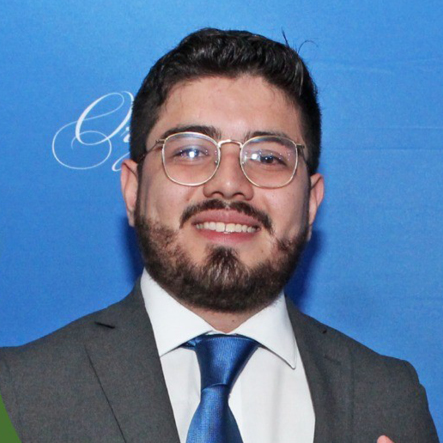
Title: Assessing thermoelectric performance of quasi 0D carbon and polyaniline nanocomposites using machine learning
Speaker
Sergio Arroyo Armida
School of Engineering and Sciences, Tecnológico de Monterrey, Mexico
Abstract
Thermoelectric materials have been widely recognized as a simple approach to harness green energy by converting thermal gradients into electrical energy. However, the intricate interplay between electrical conductivity, Seebeck coefficient, and thermal conductivity in thermoelectric materials presents a challenge to improving their efficiency. Traditional experimental methods and calculation methods have troublesome steps and long cycles for predicting new thermoelectric materials. In this work we present materials informatics-based approach, where statistical and machine learning models like correlation matrix, multiple linear regression, principal component analysis and artificial neural network were employed to find the relationship between features and thermoelectric performance. Furthermore, artificial neural network was used to analyze the roles of several compositional and microstructural features along with temperature on electrical conductivity, thermal conductivity, Seebeck coefficient and thermoelectric figure of merit (ZT) for PANI and quasi 0D carbon-based composites
Biography
Sergio Arroyo Armida is a Msc student from last semeter of Nanotechnology in Tecnologico de Monterrey and has completed his bachelor's degree in Nanotechnology and Molecular Engineering in Universidad de las Americas Pueblas. He has 2 papers related to polymer science, data analysis and Nanotechnology.
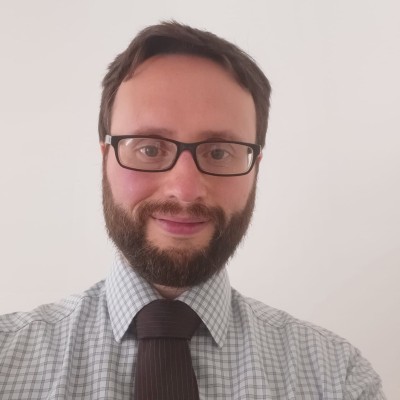
Title: The Use of Nanotechnology in Photovoltaics
Keynote Speaker
Dr. Thomas Quinn
Technical, educational and research solutions, United Kingdom
Abstract
Photovoltaics offers great potential in the World’s transition away from carbon based fuels, but historically its use has been hampered by issues of performance and cost. This work will give an overview of photovoltaics in general, limitations of traditional crystalline silicon solar cells and look into solutions offered by nanotechnology. These include multilayered thin film structures, quantum dots, nanofluids, dye sensitised solar cells, organic solar cells and the use of carbon nanotubes. Both the potential that such technologies promise and existing challenges shall be discussed.
Biography
Thomas Quinn’s PhD at London South Bank University was on polycrystalline silicon solar cells. The research looked at the deposition of microcrytalline silicon using electron cyclotron plasma enhanced chemical vapour deposition and amorphous silicon by sputtering, subsequent aluminium induced crystallisation (thermal annealing of thin film silicon assisted by an upper metal layer) and excimer laser crystallisation and subsequent characterisation techniques. Later research at Imperial College London focused on functional materials, specifically multiferroics which simultaneously show properties of piezoelectricity, ferroelectricity and ferromagnetism. He has also collaboarted on research projects in other institutes including Durham University, Queen Mary Univeristy and King Abdullah University of Science and Technology. He has also worked in scientific publishing, independently edited papers making them worthy of publication, held various teaching roles, ran activities encouraging children into STEM, assisted researchers with the installation and use of specialist research equipment and has developed applications and websites.
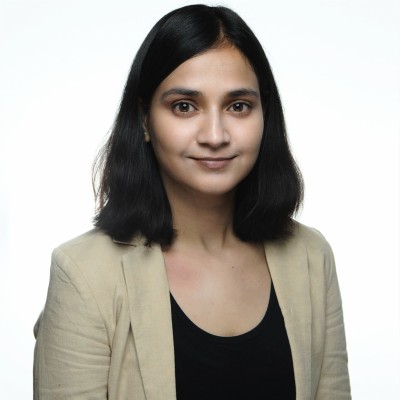
Title: - A Scalable High-Throughput Isoelectric Fractionation Platform for Extracellular Nanocarriers: Comprehensive and Bias-Free Isolation of Ribonucleoproteins from Plasma, Urine, and Saliva
Speaker
Himani Sharma
Avery Digital Data Inc., San Diego, California, USA
Abstract
Extracellular nanocarriers secreted in biological fluids play a crucial role in a variety of complex cellular functions by trafficking signaling molecules from cell to cell and are the most abundant and promising biomarkers for almost all major diseases including cancer(s) and cardiovascular disease. Abundant in physiological fluids (such as blood, urine, and lymph fluids), the nanocarriers are divided into three classes: Extracellular vesicle (EVs), Lipoprotein (LLPs), and Ribonucleic protein (RNPs) acting as key players in liquid biopsy, disease diagnostics/therapeutics, and drug delivery. However, the overlapping size and density of the nanocarriers have so far prevented their efficient physical fractionation, thus impeding bias and contamination-free downstream molecular assays. To address these shortcomings, we take advantage of their distinct isoelectric points (zeta potential) and developed a novel free-flow isoelectric focusing (charge-based) technique to fractionate different nanocarriers at high throughput, yield, and purity from various biofluids (plasma, urine, and saliva).
Biography
I have worked as an NIH Postdoctoral fellow under Prof. Hsueh-Chia Chang at the University of Notre Dame. Prior to that I did my joint PhD in Applied Physics from KIST (Korean Institute of Science and Technology) Europe, Saarland University, Germany and CEERI (Central Electronics Engineering Research Institute), Pilani, India under prestigious DAAD fellowship. At the University of Saarland, I worked under Prof. Andreas Manz, who is considered the father of modern microfluidics and Biochips. I have also worked at IITB (Indian Institute of Technology, Bombay) under Prof. Amit Agrawal, one of the renowned institute of India. I have worked across 3 continents (US, Europe, and Asia) and gained 9+ years of experience microfluidics, fluid dynamics and molecular biology.
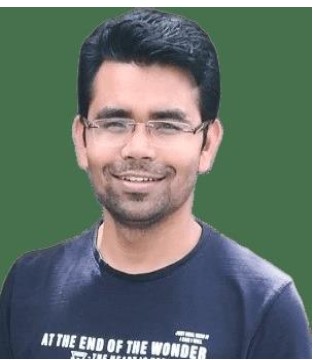
Title: Atomistic Aspects of Filamentary-Type Resistive Switching in ZrO2-Based RRAM
Keynote Speaker
Dr. Rajneesh Chaurasiya
Department of Electronics and Communication Engineering, India
Abstract
Metal oxides have been widely explored for resistive switching application due to excellent properties like high ON/OFF ratio, superior data retention, and low operating voltage. However, the conduction mechanism at the atomistic level is still under debate. Therefore, we would like to discuss the comprehensive insights into the role of neutral and charged oxygen vacancies in conduction filament (CF) formation and rupture, which are demonstrated using the atomistic simulation based on density functional theory (DFT). Electronic properties of the defect included supercell confirm the improvement in electrical conductivity due to the presence of additional energy states near Fermi energy. The CF formation and rupture using threefold and fourfold oxygen vacancies are demonstrated. Cohesive energy analysis confirms the cohesive nature of neutral oxygen vacancies while the isolated behavior for +2 charged oxygen vacancies in the CF. This atomistic simulation described detailed insight into filamentary type resistive switching observed in the experimentally fabricated device.
Biography
"Rajneesh has been an Assistant Professor (Senior Grade) in the Electronics and Communication Engineering Department at Amrita Vishwa Vidyapeetham, Chennai, since August 2023. Prior to this, he served as a postdoctoral fellow at National Cheng Kung University, Tainan, Taiwan, and a research fellow at Hanyang University, Seoul, South Korea. He earned his Ph.D. from IIT Jodhpur. In his role at Amrita Vishwa Vidyapeetham, Chennai, he leads the Advanced Functional Materials and Device Group, which focuses on Solid State Sensors, Solar Cells, Memristor devices for neuromorphic computing, and atomistic simulation of Nano Devices. Rajneesh has authored approximately 50 peer-reviewed articles in journals such as Nature, AIP, ACS, RSC, Springer-Nature,IOP, etc. Some of these articles have received the highest citation awards, and a few have been selected as featured articles by editorial boards.

Title: Application of medical nanotechnology in treats ulcerative colitis
Speaker
Armana. Abdollahy
Shahroud University of Medical Sciences, Iran
Abstract
Crohn’s disease and ulcerative colitis are two important categories of human inflammatory bowel disease (IBD). Ulcerative colitis is an idiopathic, chronic inflammatory disorder of the colonic mucosa, which starts in the rectum. Typical symptoms on presentation are bloody diarrhea, abdominal pain, fecal urgency, and tenesmus. Because the precise mechanisms of the inflammation and immune responses in UC have not been fully elucidated, the treatment of UC primarily aims to inhibit the pathogenic factors of the inflammatory cascade. Inconsistencies exist regarding the response and side effects of the drugs that are currently used to treat IBD. Recent studies have suggested that the use of nanomedicine might be advantageous for the treatment of intestinal inflammation because nano-sized molecules can effectively penetrate epithelial and inflammatory cells. I reviewed nanomedicine treatments, such as the use anti-inflammatory molecules with delivery systems in experimental colitis models and clinical trials for UC based on a systematic search. The efficacy and usefulness of the treatments reviewed in these manuscripts have been demonstrated in experimental colitis models and clinical trials using various types of nanomedicine. Nanomedicine is expected to become a new therapeutic approach to the treatment of UC.
Biography
Armana. Abdollahy is a midwife and Master of medical nanomedical in Shahroud University of Medical Sciences (SHUMS), IRAN. In this main investigation oral drug delivery to the colon by Nanomedicin and nanotechnology.
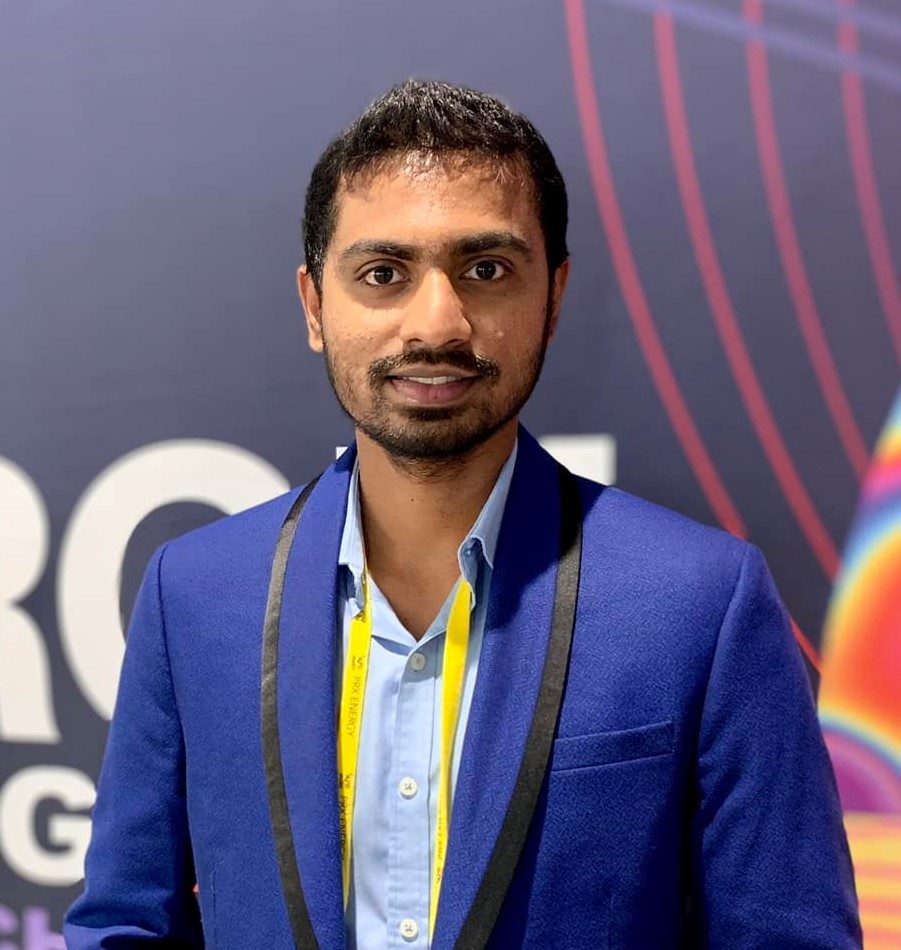
Title: Studying the structure, formation, and mechanics of natural spider silk nanofibrils
Keynote Speaker
Dr. Dinidu Perera
William & Mary, USA
Abstract
Spider silk features a remarkable combination of strength and toughness, which outperform many of the known materials. Additionally, its biocompatibility, biodegradability, and lightweight create numerous potential applications. Despite extensive research, comprehensive experimental evidence of the formation and morphology of the internal structure and the mechanics of this biopolymer is still limited and controversially discussed. Here, we disassembled spider silk fibers by mechanical force and showed that it is completely composed of ≈10 nm nanofibrils aligned in the fiber direction. The extreme stability and the robustness of these nanofibrils reveal that they give birth to fiber’s outstanding mechanical performance. Furthermore, we observed that the silk protein possesses an intrinsic mechanism to form nanofibrils of the same dimensions and morphology as the disassembled natural nanofibrils via shear-induced self-assembly, which can be easily triggered in-vitro. Also we studied the anisotropic mechanical properties of natural silk fibers and measured the interaction forces between its nanofibrils. This knowledge helps to understand the fundamentals of this exceptional material, paving the way for the realization of
silk-based high-performance materials.
Biography
I’m a materials scientist majoring in nanomaterials structural and mechanical characterizations. I obtained my PhD in materials science from William & Mary, Virginia. My major research work was studying the structure and mechanical properties of silkworm and spider silk. I have expertise in advanced materials characterization techniques including AFM, SEM, Raman/FTIR spectroscopy. After my PhD, I joined the semiconductor industry as a photolithography Process Development engineer. I am currently working to develop photolithography processes for next-generation magnetic storage devices.
“ Will be updated soon...”
“ Will be updated soon...”
+91 9491 456 452
7-89-1-18, NVR LAYOUT, Madanapalle, Andhra Pradesh 517325, India
About Us
Global Scientific Guild organizes conferences and webinars to promote quality research and real world impact in an atmosphere of true international co-operation between scientists, doctors, professors, practitioners, engineers and industry by bringing together the world class renowned personalities to discuss the latest developments and innovations at one common platform.